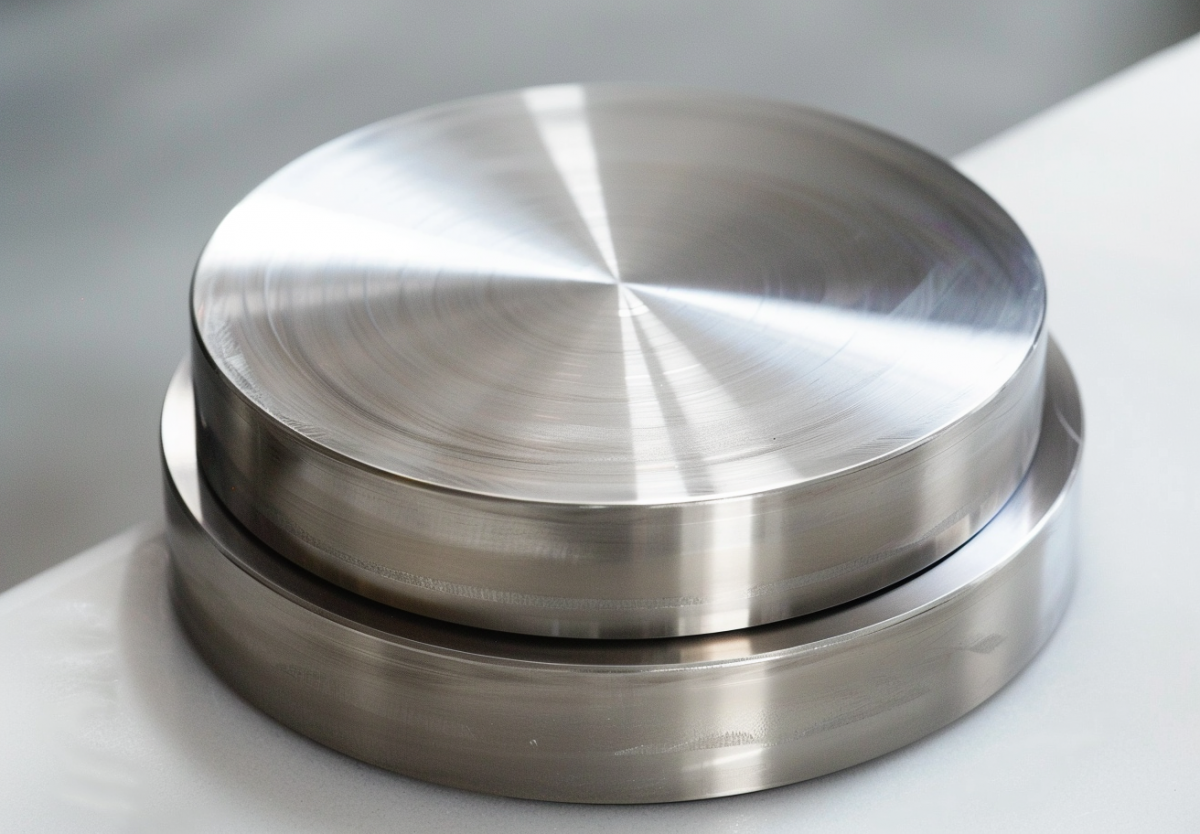Tantalum sputtering targets are well-regarded for their ability to withstand high temperatures, making them an essential material in industries that require both heat resistance and chemical stability. With a melting point of 3017°C (5463°F), tantalum can endure extreme conditions while maintaining its structural integrity. This makes it valuable for applications in electronics, aerospace, and high-temperature environments, where materials must perform under intense heat and stress.
Properties of Tantalum Sputtering Targets
Tantalum is a refractory metal, meaning it has a high melting point and excellent resistance to wear and corrosion. Its unique properties make it a top choice for high-temperature applications:
- High Melting Point: With a melting point of 3017°C, tantalum is one of the most heat-resistant metals. It can operate in environments where temperatures exceed 2000°C without breaking down or degrading, making it ideal for processes that involve extreme heat.
- Corrosion Resistance: Tantalum is highly resistant to corrosion, even in harsh environments. It does not react easily with most chemicals, which is why it is often used in industries that involve corrosive substances, such as chemical processing and medical devices.
- Good Conductivity: Tantalum has excellent electrical conductivity, making it useful in electronics. It helps maintain the stability of electronic components in devices that operate under high temperatures.
- Ductility: Even at high temperatures, tantalum remains ductile, allowing it to be easily formed into thin films without breaking. This makes it suitable for precision applications where flexibility is important.
Applications of Tantalum Sputtering Targets
Tantalum sputtering targets are widely used across different industries. Some of the most common applications include:
- Semiconductor Manufacturing: Tantalum is used in the thin films of semiconductor devices because of its stability under heat and its ability to act as a barrier between different layers of materials. It ensures that the integrity of circuits remains intact even under high operating temperatures.
- Aerospace Components: Tantalum is used to coat parts of spacecraft and aircraft that are exposed to high temperatures. Its resistance to heat and corrosion helps extend the life of components in these demanding environments.
- Medical Devices: In the medical industry, tantalum’s biocompatibility and corrosion resistance make it a preferred material for implants and surgical tools. Tantalum coatings help protect medical devices from corrosion and wear, ensuring their durability and longevity.
- Chemical Processing: Tantalum is often used in equipment exposed to harsh chemicals, where high heat and corrosive substances can quickly degrade other materials. Its corrosion resistance ensures that it remains effective even in highly reactive environments.
Comparison with Other Sputtering Target Materials
In the article “Top 10 Sputtering Target Materials that Can Withstand High Temperatures,” tantalum is highlighted as one of the top contenders for high-temperature applications. While it is not as heat-resistant as tungsten, which has a melting point of 3422°C (6192°F), tantalum offers a unique combination of high heat resistance, excellent corrosion resistance, and ductility.
- Tungsten: Tungsten is more heat-resistant with a melting point of 3422°C, but it is more prone to oxidation at high temperatures than tantalum. Tantalum’s superior corrosion resistance makes it more suitable for environments where both heat and chemical exposure are concerns.
- Molybdenum: Molybdenum has a lower melting point than tantalum, at 2623°C (4753°F), but it is known for its high creep resistance. However, in situations where corrosion resistance is also required, tantalum becomes a more suitable choice.
- Silicon Carbide (SiC): Silicon carbide is a ceramic material that can withstand temperatures up to 2700°C (4892°F). While it performs well in high-temperature applications, tantalum is a better choice when both heat resistance and electrical conductivity are needed.
Why Tantalum is Ideal for High-Temperature Applications
Tantalum sputtering targets are ideal for applications where high heat and harsh conditions are involved. Its ability to maintain its properties under extreme temperatures, along with its resistance to corrosion and high electrical conductivity, ensures that it can meet the demands of industries requiring both durability and performance.
Tantalum’s ductility and workability also make it versatile in thin-film deposition processes. The material can be deposited in layers of varying thickness to suit different needs, whether in microelectronics or in industrial applications where precision and reliability are critical.
Conclusion
Tantalum sputtering targets stand out for their unique balance of heat resistance, corrosion resistance, and conductivity. These properties make them a top choice for industries that require materials capable of enduring extreme conditions. In the article “Top 10 Sputtering Target Materials that Can Withstand High Temperatures,” tantalum is recognized as one of the most versatile materials available for high-temperature sputtering processes.
For companies looking for reliable and high-performance sputtering targets, Stanford Advanced Materials (SAM) provides a wide range of tantalum and other refractory metal targets. SAM ensures that industries have access to the highest-quality materials for their specific needs, helping them achieve consistent performance in demanding applications.

